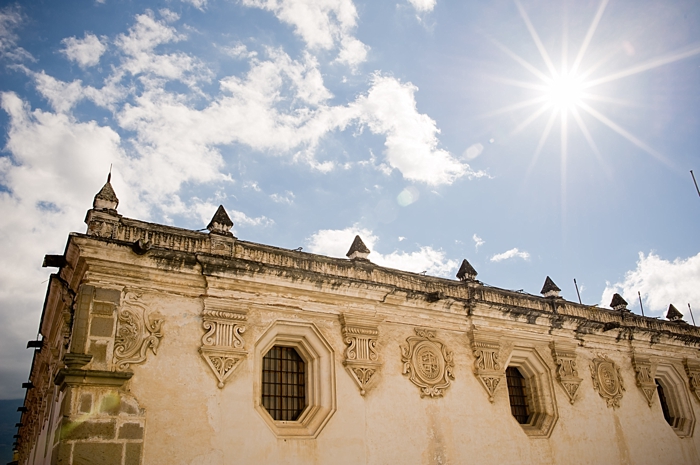HAVE YOU EVER HEARD ABOUT THE “CANÍCULA”?

- Posted by Mundo Spanish School
- Posted in Articles
The “Canícula” is a very hot period of the year, but the peculiar thing is that it is like a break in the rainy season in Guatemala. It is usually characterized by extremely hot and clear days, brighter, greener and more vivid vegetation and more colorful flowers. If it lasts too long, however, it might turn into a drought and be a sign of bad omens. But now we will tell you something more about the origins of this word.
The “Canícula” or “dog days” or “Indian Summer” starts a few weeks after the summer solstice that occurs on June 21 in the northern hemisphere and December 21 in the southern hemisphere. The approximate start date of the “Indian Summer” is July 14 in this hemisphere. The word “canícula” comes from “canes” or dogs and it’s an allusion to the constellation “Can Major” and its star “Sirius” which is the brightest of its stars. “Its first reappearance as a visible star in the morning sky after its period of invisibility, coincided centuries ago with the hottest days. That is where the name “dog days” comes from.”
On the other hand, farmers, and especially older people who used to look at the stars before planting their crops in the Central American countries, noticed that around the 15th of July the weather got drier and it was not convenient to sow. This dry period ended near the 15th of August when the planting restarted. This period seemed to coincide with the position of the Can Menor constellation in the zenith at midnight.
Some of the most common myths related to the “Indian summer” are: when, during this time, a person has a bleeding wound especially on the feet or hands, these wounds don’t heal well or take a long time to heal. Baby animals die if you don’t take good care of them. Plants dry out. Fruit falls from the tree and women don’t get pregnant. There is no scientific evidence to support it, but people believe strongly in these myths and therefore they make offerings or carry out rites to Mother Nature so that the dog days are favorable and it’s just a good time when you can enjoy the heat.
———————————————————————————————–
¿ALGUNA VEZ ESCUCHASTE SOBRE LA “CANÍCULA”?
La canícula es un periodo de tiempo bastante caluroso del año, pero lo peculiar es que, es como una pausa en la estación lluviosa en Guatemala, que se caracteriza porque que los días suelen ser sumamente caluroso además los días son muy claros y la vegetación es más viva, brillante, más verde y las flores más coloridas, pero si se prolonga demasiado pasa a ser una sequía y de malos presagios, pero cuál es el origen de esta palabra, ahora te contamos.
La canícula empieza unas semanas después del solsticio de verano que ocurre el 21 de junio en el hemisferio norte y 21 de diciembre en el hemisferio sur; una fecha aproximada del inicio de la canícula es el 14 de julio para este hemisferio, la palabra canícula viene de canes/perros y su alusión es por la constelación “Can Mayor” y su estrella “Sirio” que es la más brillante de sus estrellas, “su primera salida es decir su reaparición como estrella visible en el cielo de la mañana después de su periodo de invisibilidad, coincidía hace siglos cono los días más calurosos. De ahí provine el calificativo de días de perros.”
Por otra parte, la gente de campo, sobre todo las personas mayores que se acostumbraron a iniciar la siembra de sus cultivos mirando a las estrellas en los países de América Central, notaban que cerca del 15 de julio el clima se secaba y no era conveniente sembrar. Este tiempo seco se terminaba cerca del 15 de agosto, en cuya fecha reiniciaban la siembra. Este tiempo parecía coincidir con la posición de la constelación del Can Menor en el cenit a la media noche.
Algunos de los mitos más comunes relacionados con la canícula son: que, si durante este tiempo una persona tiene una herida sangrante en especial en los pies o manos, estas no sanan bien o tardan mucho en sanar, las crías de los animales se mueren si no tienen cuidado, las plantas se secan, los frutos de los árboles se caen y las mujeres no quedan preñadas, de esto no hay pruebas científicas que respalden dichos mitos, pero las personas creen fuertemente en estos mitos y por eso ofrecen ofrendas o ritos a la madre naturaleza para que sea benigna la canícula y no pase de ser un buen tiempo y gozar del calor. Por último, canícula se traduce al inglés como “Indian Summer”
